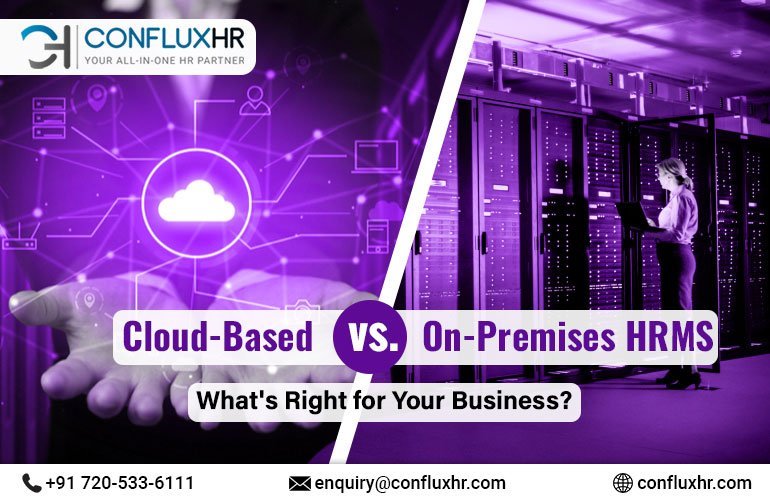In today’s digital era, choosing the right Human Resource Management System (HRMS) software is critical for businesses looking to streamline their HR operations. One of the primary considerations when selecting a HR software is the deployment model: cloud-based or on-premises. Each approach has its advantages and drawbacks, making it essential to evaluate which option aligns best with your organization’s needs. In this blog, we’ll explore the pros and cons of cloud-based and on-premises HRMS software, helping you make an informed decision that suits your business.
Understanding Cloud-Based HRMS Software
Cloud-based HR software, or cloud HRMS, is hosted on external servers and accessible via the internet. This approach eliminates the need for on-site infrastructure, making it a popular choice for businesses of all sizes.
Here are the pros and cons of adopting cloud-based HRMS software:
| Pros of Cloud-Based HR Software | Cons of Cloud-Based HR Software |
| Cost-Efficiency: Lower upfront costs | Internet Dependency: Network disruptions can hinder access |
| Accessibility: Access from anywhere | Data Privacy Concerns: Concerns about data storage on external servers |
| Scalability: Easily scales with business | Subscription Costs: Long-term expenses can add up |
| Automatic Updates: Always up to date | NA |
| Data Security: Strong encryption measures | NA |
Understanding On-Premises HR Software
On-premises HR software is installed and operated on servers within the organization’s physical premises. This traditional approach offers specific advantages and drawbacks that should be considered:
| Pros of On-Premises HR Solution | Cons of On-Premises HR Solution |
| Data Control: Complete control over HR data | Higher Initial Costs: Significant upfront investment |
| High Customization: Tailoring software to specific needs | Maintenance Burden: Responsibility for updates and maintenance |
| Data Access: No internet dependency | Limited Accessibility: Access confined to physical location |
| NA | Scalability Challenges: Complex scaling and additional costs |
Making the Right Choice for Your Business
The decision between cloud-based and on-premises HRMS solution hinges on various factors, including your budget, workforce, data security concerns, and long-term business objectives. To make an informed choice, consider the following steps:
- Assess Your Needs: Evaluate your organization’s HR needs, including the number of users, features required, and data security considerations.
- Budget Considerations: Determine your HRMS implementation budget, including initial costs and long-term operational expenses.
- Data Security: Analyze your organization’s data security requirements and assess whether your HR data can be securely hosted on external servers.
- Scalability: Consider your organization’s growth potential and whether the chosen HRMS can accommodate your expanding workforce.
- Accessibility: Consider the location of your workforce and their need for remote access to HR data.
- Customization: Assess whether your HR processes require high customization and integration with other systems.
Conclusion: Making the Right HRMS Choice
In the ever-evolving landscape of HR management, the decision between cloud-based and on-premises HRMS software can significantly impact your organization’s efficiency and data management. By carefully weighing the pros and cons of each option and aligning them with your business needs, you can make an informed choice that supports your HR operations and drives business success.
Are you ready to explore your HRMS options? Contact ConfluxHR today to learn how our comprehensive HR management solutions can empower your business.
Contact ConfluxHR for a Free HRMS Consultation


